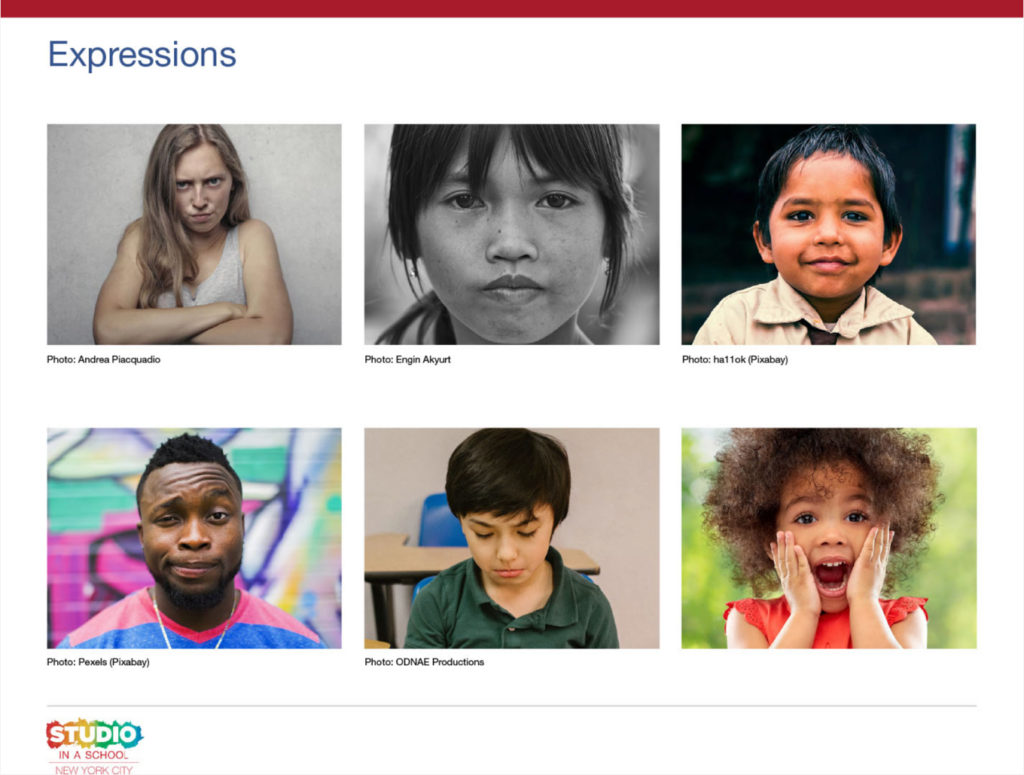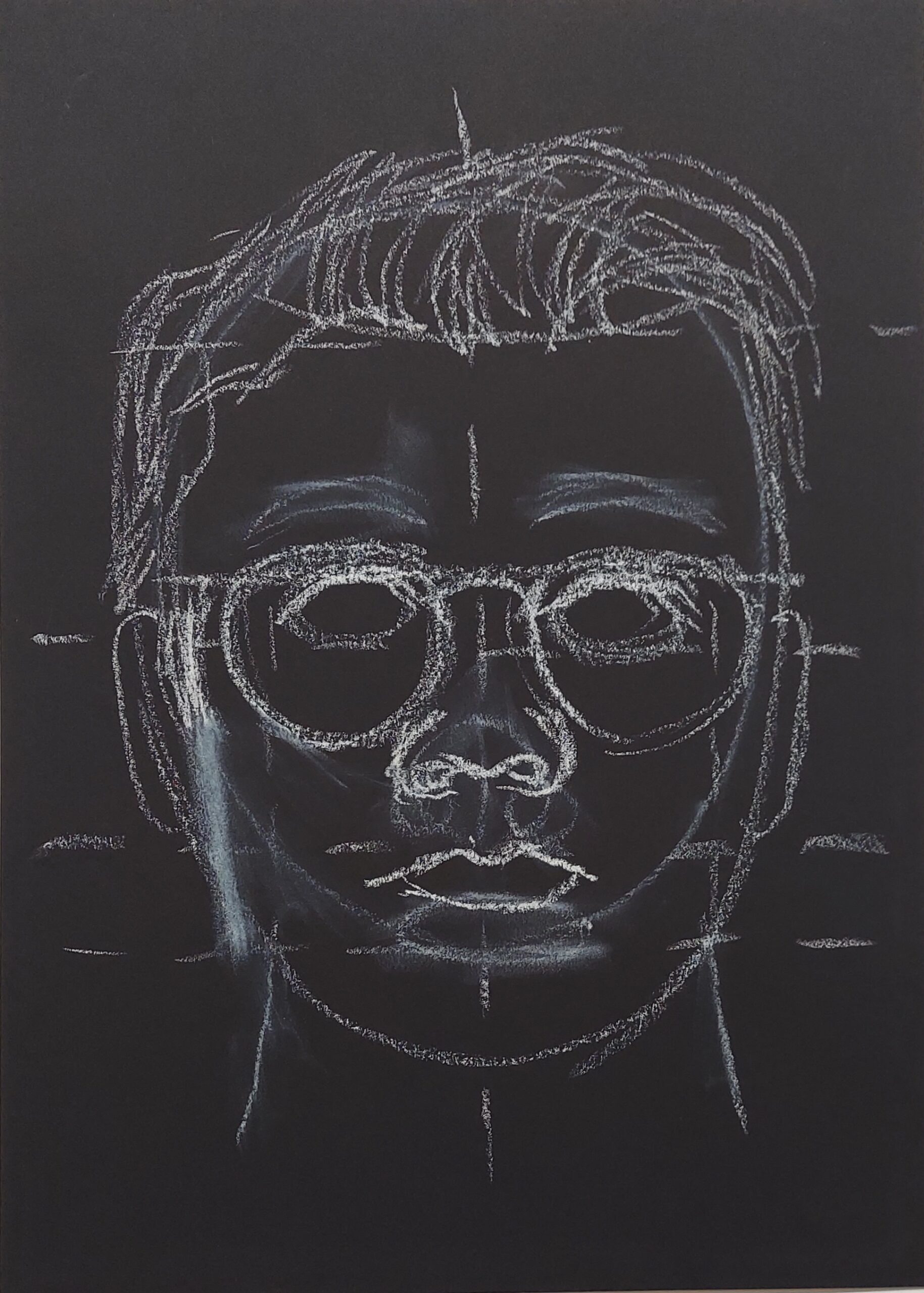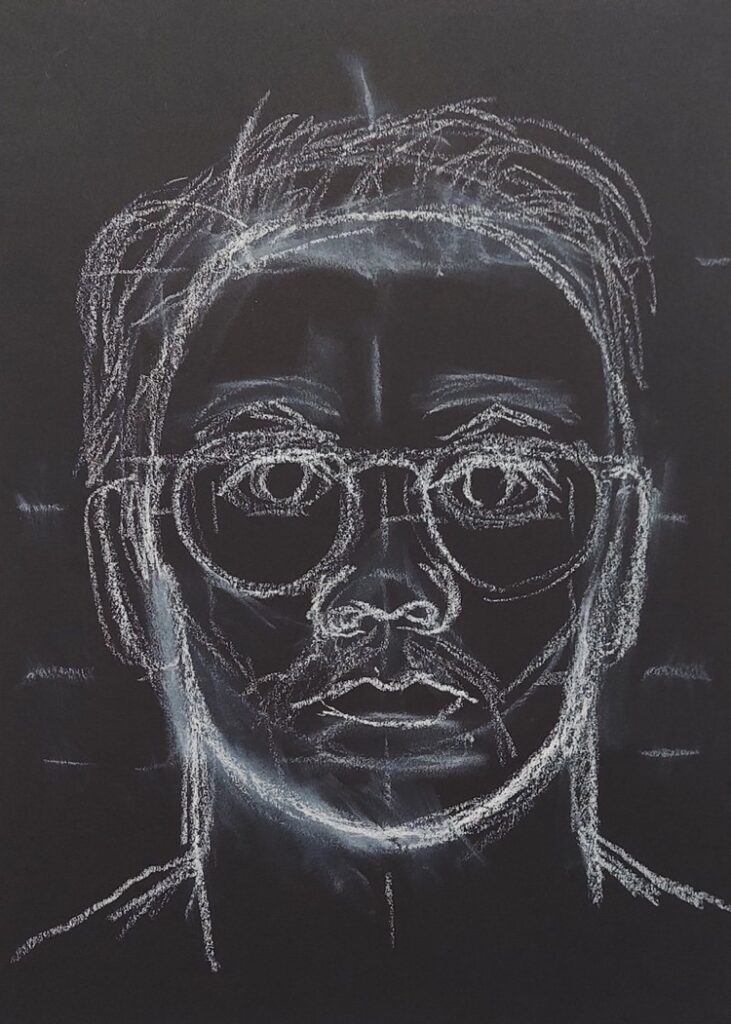Overview
Students will begin to adjust the features in their self-portrait to make them more accurate or to convey a specific emotion.
Materials and Tools
- Self-portrait from previous session
- Oil pastels
- Mirror
Objectives
Students will understand that:
- Editing is an essential part of the artistic process.
- The shapes of facial features change when a person displays emotion.
Students will be able to:
- Use their understanding of facial anatomy to accurately edit their eyes, nose and mouth.
- Adjust their self-portraits to convey an emotion.
Activities
Close Looking

Questions for Discussion:
- How do you think this person is feeling?
- How did the artist exaggerate the eyes? The eyebrows
- What colors do you notice?
- Where do you see shadows or highlights?
- What do the artist’s choice of colors, shadows, or highlights tell us about the subject?
Activities
Facial Expressions and Exaggerated Features

The shape of people’s features can change when they display an emotion.
Demonstrate looking in the mirror and tracing the shape of various features—eyes, eyebrows, and mouth.
Have students look into a mirror and practice making various facial expressions.
Have students trace the shape of various features as they make facial expressions.
Ask:
How does the shape of your eyes change when you make an angry face? A happy face?
How does the shape of your mouth change when you make a silly face? A surprised face?
Adjust your drawing.
Demonstrate adjusting your self-portrait to look more accurate or to convey an emotion.
Start by adjusting your eyes, nose, mouth, and hairline.

Adjust the shape of your face.
Demonstrate using your finger to rub out your mistake before adjusting the shape of your face.
Ask:
Do you need to make your face larger or smaller?
Do you need to adjust the angle of your chin?

Continue to refine your features.
Demonstrate adjusting your features to work better with the new shape of your face.
Ask:
Are your eyes the correct size and shape?
What about your nose? Your mouth?

Reflection Questions for Discussion
- How did you adjust your self-portrait today?
- What kind of expression are you drawing in your self-portrait?
- What colors do you plan to use to convey your emotion in your drawing?
Resources
Gustave Courbet, The Desperate Man, 1843–45

